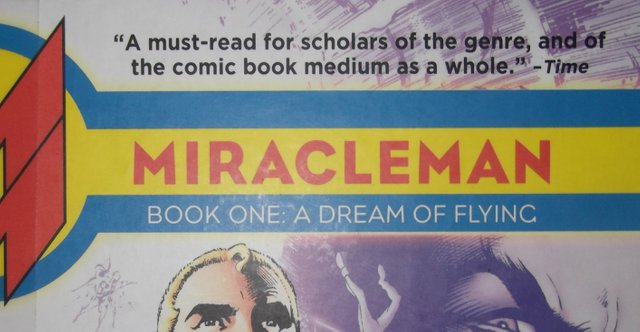Review: Miracleman Book 1
Comic book writer Alan Moore is known for a lot of things.
His graphic novel “The Killing Joke” is often considered the best Batman story about the Joker ever written.
“Watchmen,” released in 1986, proved definitely that comic book stories could have all the symbolism, themes and dramatic power that prose stories have.
For many years, a select number of people talked about a Moore story almost no one could find: the Miracleman series.
Moore started writing the Miracleman series (based on a 1950’s superhero originally called Marvelman) in 1982.
The series went through various production, creative and legal problems so complicated and strange you could write a whole book about it. In fact, there is such a book, The Poisoned Chalice by Pádraig Ó Méalóid, and a very informative documentary as well.
To make a long story short, the Miracleman stories weren’t available to most people until Marvel bought the full rights to the stories in 2013 and republished them.
The wait turns out to be worth it.
The first volume, “A Dream of Flying,” opens with a nightmare.
A middle-aged man, Michael Moran, wakes up from a recurring nightmare which involved explosions and an odd word he can’t remember.
After talking with his wife about it, he leaves for his freelance reporting job. He tries to remember the odd word as he travels to a nuclear power plant to report on a protest.
Terrorists arrive to steal the plant’s plutonium just after Moran gets there.
Moran starts to have a nervous breakdown, and remembers the word:
“Kimota.”
Lightning seems to flash through the room, and suddenly Moran has changed into a taller, more muscular being in a superhero costume.
“I’m… Miracleman,” he says, dazed.
Like a man waking from amnesia, he remembers that he used to be a superhero. He even remembers all his adventures, which included various allies and colorful enemies.
But for some reason, Moran forgot everything (including the fact he ever had superpowers) 18 years ago, and he has no idea why or how that happened.
Given Moore’s reputation, it’s tempting to always use words like “revolutionary” and “visionary” when writing about one of his works.
In this case, that’s really the only way to describe the work.
Here, you can see ideas that changed the comic books industry a few years down the road.
Moore uses one of the themes he later used in “Watchmen,” putting the characters in a realistic world and having them react to how strange superpowers are. When Moran first appears to his wife as Miracleman, she has a hard time believing he used to fight villains called “Young Nastyman” and “Dr. Gargunza.”
He also explores the tough, gritty side of being a superhero, an idea that Frank Miller would later use in “The Dark Knight Returns.” When Miracleman fights against an old friend who’s turned against him, the battle gets vicious really fast. At one point, his opponent picks up a nearby toddler who thinks he’s Superman and throws him toward a building.
On top of all this, Moore finds a very elegant way to wipe away the main character’s original story, so he could keep the character but use his own perspective. Some fans will remember he used this same technique in the horror comic “Swamp Thing.”
Overall, this is truly a classic book.
RATING: 5 out of 5 stars.
CONTENT WARNING: This book includes some language, implied sex scenes and one gory battle scene.
Article text copyright 2018 by Gabriel Connor Slater. Feel free to share and quote, but use proper attribution.
